Layers, strata, adding, extracting
24 January 2018
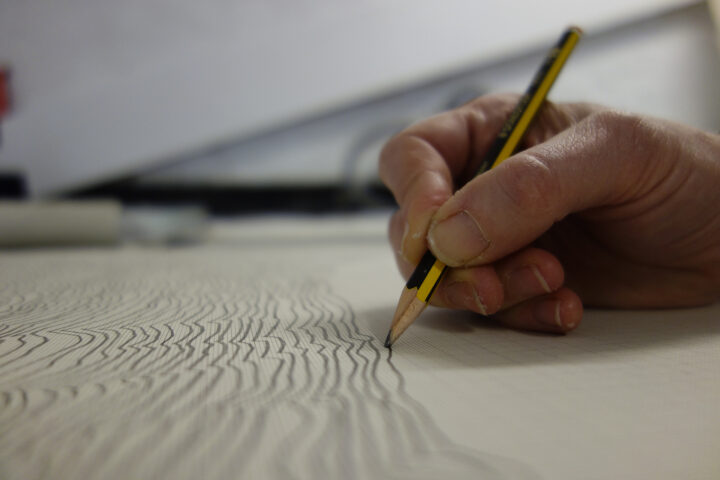
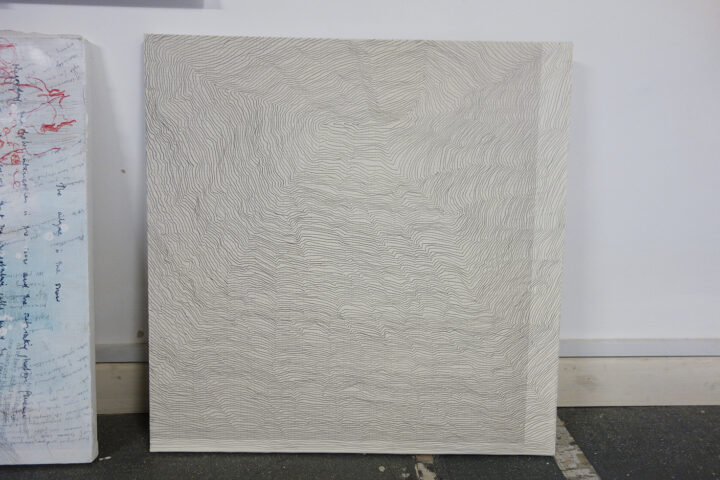

Cosmic miniature worlds
11 January 2018
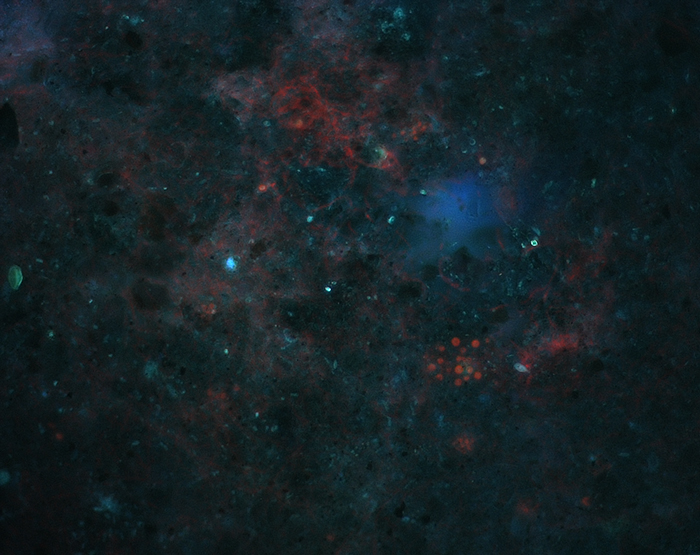
Image: Dr Harry Langford
Have just spent an hour and a half with the brilliant and generous Dr Harry Langford looking at digital images of cryoconites in the lab. His patience is incredible as I try to retrieve biology and chemistry from the recesses of my teenage brain. Showing me different kinds of photo-imaging and explaining methods of preparing and viewing microscope slides, we look at the cosmic miniature worlds of cyanobacteria, algae, snow algae, diatoms (two cells) and the dyed blue, flourescing green and blood red of the cells, silica and strands. Again the two opposing colours of bluegreen and redorange dance on the screen. Like veins or the creases in a bolt of material crushed and released.
The cryoconites are symbiotic colonies of cyanobacteria, algae, fungal matter and the particles of soot and rock they take in and feed off. They can survive the winter and flourish in the summer ice.
Ghosts
2 January 2018
How the strangest things can get ideas started. A friend sends a link to a ghost story. I get about a tenth of the way through, and the images it conjures up send me looking up encaustic and wax and going back into the ideas of fragments of images buried in semi-opaque whiteness. Before long I’m hunting down candles in the house and melting them into ice-cube trays, pondering on the carbon smoke that the candle spits out and constructing plywood shelters in my head.
Wax tablets. Runes. Documentation.
Laboratory life
7 December 2017
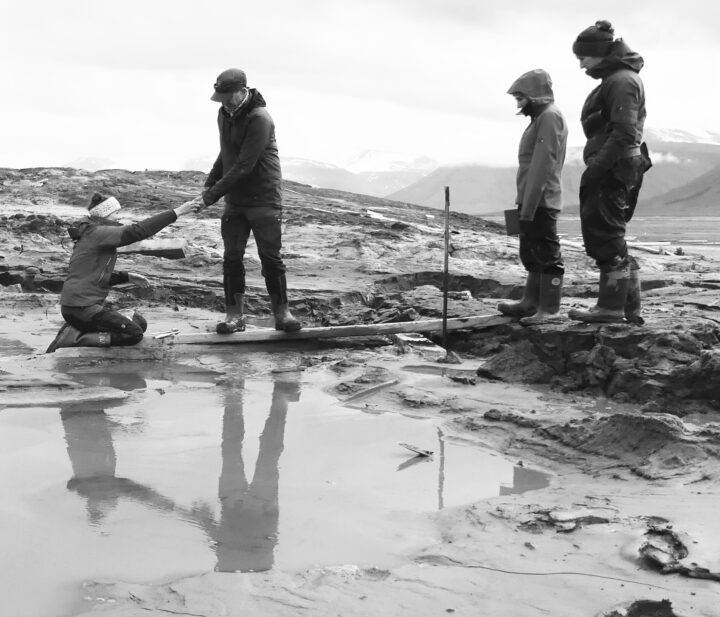 Met lovely people last night who had been to my lecture and wanted to chat more about it. Again, as so often, strangely remarkable links in our histories – Africa came up a lot.
Met lovely people last night who had been to my lecture and wanted to chat more about it. Again, as so often, strangely remarkable links in our histories – Africa came up a lot.
They had suggested my comments about ‘scientists as performance artists’ reminded them of Bruno Latour, who I didn’t know, so then I had to get some books out of the library … ‘Laboratory Life’ and ‘Pandora’s Hope’ – anthropologists who study scientists as a ‘tribe’, looking at how they work and what they are like as people. I am fascinated by this. The effort that (for example) ice scientists go to to get their data – a lot is now done by sitting in front of a computer downloading satellite information, but much still has to be done by travelling thousands of miles, hiking for days, camping in adverse and sometimes dangerous conditions, in order to measure a stick, or collect a small bottle of water.
From these collected items, some numbers will be derived and these will turn into a long paper, stuffed with words from what is another language, or at least a dialect (it would be interesting to clarify this) and this, ultimately, and if anybody reads it, may turn into government or global policy on life. Perhaps almost as amazingly, there is so much that is missed, or not included, or which doesn’t clarify a theory or which nobody ever reads which doesn’t go on to make global policy.
Just as much great literature or art is never seen, which might have helped us understand something about love, or war, or the human condition. Lost, or merely hidden to be uncovered some other time. Buried, to be mined and perhaps treasured in another generation.
After the seminar
23 November 2017
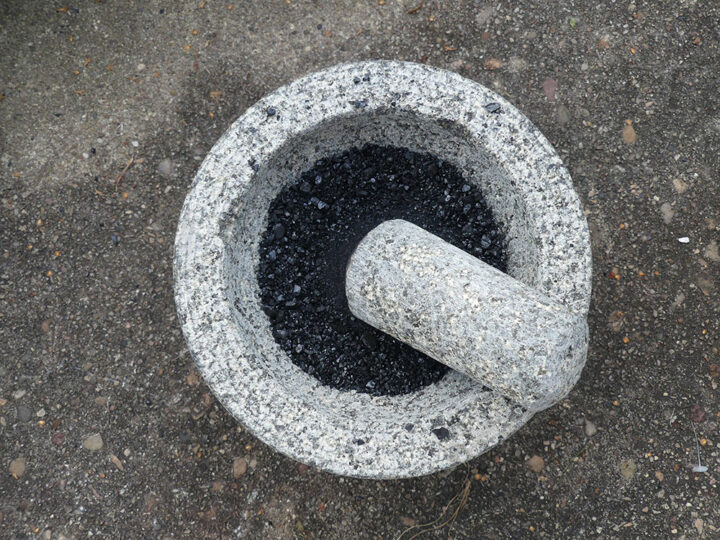 Seminar’s finally done. It went really well, I think. Full room, good mix of students and staff and both human and physical Geography. It felt odd telling ice-scientists what they do, but several people in the room don’t know, so I had to pitch it for everyone. Thankfully nobody seemed to take offence that I was teaching grandmothers to suck eggs, or whatever. Some great questions and comments, and it finally feels as if people have a better idea of what I’m doing here, or trying to do. Lots of people coming up with suggestions or offering to help, which is great.
Seminar’s finally done. It went really well, I think. Full room, good mix of students and staff and both human and physical Geography. It felt odd telling ice-scientists what they do, but several people in the room don’t know, so I had to pitch it for everyone. Thankfully nobody seemed to take offence that I was teaching grandmothers to suck eggs, or whatever. Some great questions and comments, and it finally feels as if people have a better idea of what I’m doing here, or trying to do. Lots of people coming up with suggestions or offering to help, which is great.
I’m still stuck on one of the questions as to whether I’m supposed to be ‘teaching’ the public as it were. Sometimes feel the weight of trying to convey the science in order to ‘save the planet’, that it’s all about climate change and teaching. Sometimes I just want to explore images for no reason, because they ‘deepen the mystery’ as Bacon said. Perhaps I can do both.
Took a bag of coal down to the lab to be crushed (there’s me trying to do it by hand in a pestle and mortar!) and bumped into Maria, who showed me round the lab and is going to let me test out chemicals and litmus paper and stuff and has orange ochre I can use. I’m going at this full-time and there’s just so much to inspire, so many ideas. These subjects are going to keep me going for years.
Seminar 21st November
1 November 2017

Expectation
23 October 2017

In Topos, with about 50 of my photos printed out. Trying not to be seduced by ‘nice’ images and to look at the ideas behind them. Feeling the weight of expectation.
weight
pressure
release
(energy)
entrances ( ‘en-trance’)
ablation/oblation
falling
melting
crumbling//
decay
destabilise
Scanning and the apocalypse
16 October 2017
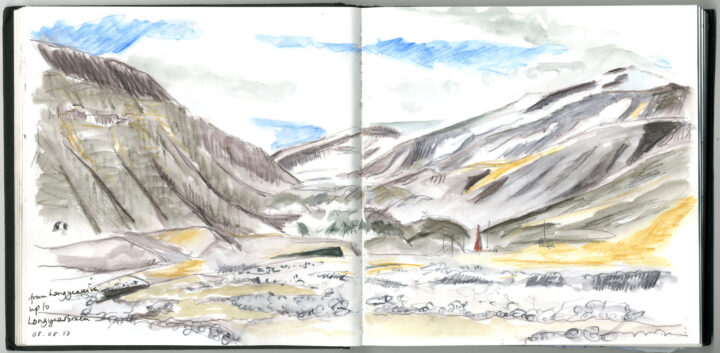 Good day today. Finally got to a scanner and managed to scan the whole sketchbook sat in a room full of architecture students all busy creating incredible visions. I often feel humbled by architects – clearly they have all the skills that artists do, but then they can design houses, too.
Good day today. Finally got to a scanner and managed to scan the whole sketchbook sat in a room full of architecture students all busy creating incredible visions. I often feel humbled by architects – clearly they have all the skills that artists do, but then they can design houses, too.
Jess popped in to my room and we chatted about the exhibition, too. She’s incredibly enthusiastic about it, which is wonderful, as it’s been feeling like a weight around my neck. I really want to have one, that’s not the point, it’s the logistics, and the feeling of having to fit the work to a venue, which means self-editing at this early stage. I often do that, and I really want to make myself explore different ideas this time.
Outside is a strange atmosphere: the sky is overcast with a deathly orange glow, very post-apocalyptic. Ireland is getting battered by Hurricane Ophelia (ex-Ophelia) and the wind is whipping leaves around the deck of my ‘ship’ and flicking them into the 5cm gap I’ve opened in the window. It’s apparently nearly 20 degrees C outside, and the radiator is still on here. Reading Oryx and Crake – it feels fitting at the moment.
Coal paint
13 October 2017
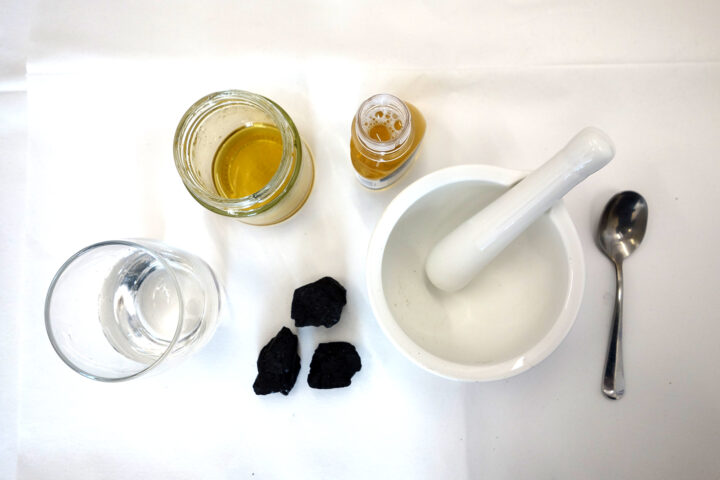 Grinding coal in a small, ceramic pestle and mortar. I think it would be easier with a heavier weight one – the coal (despite crumbling in my hands when collecting it) seems incredibly hard, and the dust is coarse.
Grinding coal in a small, ceramic pestle and mortar. I think it would be easier with a heavier weight one – the coal (despite crumbling in my hands when collecting it) seems incredibly hard, and the dust is coarse.
Mix in proportions of:
2 tsp pigment
I tsp gum arabic
1/2 tsp honey
‘Go easy on the water’
(recipe Theo Chronis)
I love the idea that the pigment is plant material, gum arabic is tree sap and honey is made by bees from plants. Utterly organic paint.
‘The cold side’
31 July 2017
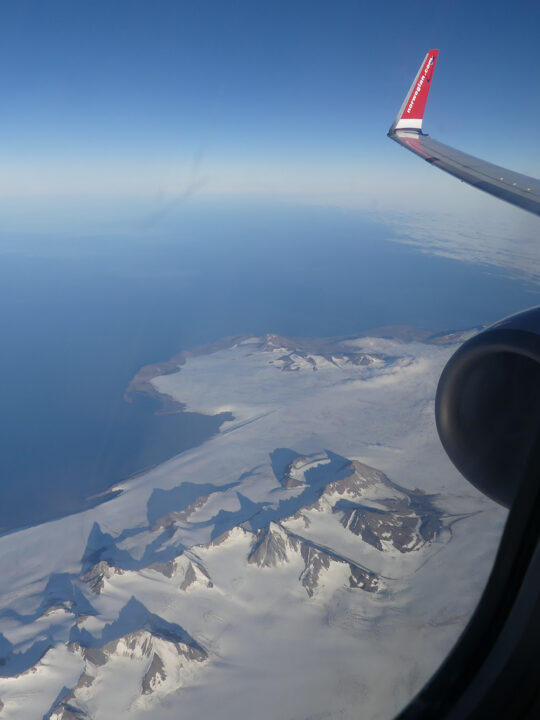
Torrential rain taking off from Oslo (glad all my stuff is in dry-bags) then brilliant sun, then cloud. Very sure Svalbard would be in cloud and I wouldn’t see anything, or was on the wrong side or whatever, but my calculation with the setting sun was right, so the RH side was better. And wow. Just wow. Cloud cleared just as we got to Svalbard and I saw incredible glaciers, mountains, low cloud, rock – absolutely stunning and I got off the plane grinning from ear to ear. Andy there with Jakob (Danish glacier scientist). Andy proposes a drive since the light is so good. Ended up doing half a tour of Svalbard: town, whalebone in river-bed, Methane Explosion camp with caravan that looked like it was abandoned in the 50’s (apparently a couple of weeks’ ago?). Barnacle geese, red-throated divers, reindeer, lots of dog camps, coal mines, satellites and then most of the way up a mountain. It is broad daylight at 1pm. My mind definitely does not want to go to sleep.